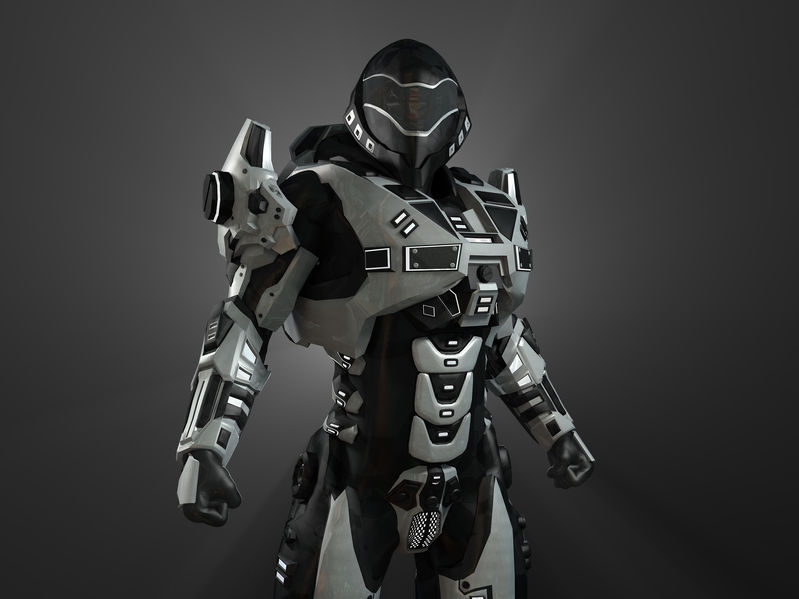As we move deeper into the twenty-first century, there is a major trend to enhance the body with “cyborg technology”. In fact, due to medical necessity, there are currently millions of people worldwide equipped with prosthetic devices to restore lost functions, and there is a growing DIY movement to self-enhance the body to create new senses or to enhance current senses to “beyond normal” levels of performance. From prosthetic limbs, artificial heart pacers and defibrillators, implants creating brain-computer interfaces, cochlear implants, retinal prosthesis, magnets as implants, exoskeletons, and a host of other enhancement technologies, the human body is becoming more mechanical and computational and thus less biological. This trend will continue to accelerate as the body becomes transformed into an information processing technology, which ultimately will challenge one’s sense of identity and what it means to be human. We are going to talk about “cyborg enhancement technologies” in this paper. We will focus on technological improvements to the brain and the creation of new senses. These technologies may make it possible to directly implant information into the brain, edit memories, communicate wirelessly between brains (i.e., thought-to-thought), and explore and experience a wide range of sensory information. The paper concludes with musings on the future direction of cyborgs and the meaning and implications of becoming more cyborg and less human in an age of rapid advances in the design and use of computing technologies.
Three advanced technologies that can make cyborg real in near future
Muscle-Propelled Force Feedback
Haptic innovation—or power criticism—isn’t new. In the event that you’ve played a computer game with a vibrating controller, you’ve encountered haptic innovation—the thunder pack vibrates concurrent with activity in the amusement, giving a sensation along the visual picture. Now and again, compel criticism is utilized to influence you to accomplish something particular by making a power that you normally endeavor to counter. Consider it like somebody pushing you sideways—your body opposes and pushes back towards them with the end goal of keeping up your adjustment.
Brainwave Sensors
Utilizing a brainwave pursuer—known as utilitarian close infrared spectroscopy, or fNIRS—a gathering of specialists at Tufts University has built up a gadget that won’t just get brainwaves, yet really sorts out that information to take advantage of individual inclinations. For this situation, the fNIRS information was connected to a mind-PC interface that could precisely show film proposals. Stranger yet, the more a man utilized the framework, the more precise the forecasts progressed toward becoming, as though it was really finding out about that individual after some time. These sensors are hard to use in regular settings since easily overlooked details like head developments can raise the flag. However, a similar group is building up a program that can successfully sift through this commotion.
Telescopic Vision
Superpower is a term that shouldn’t be tossed around daintily, yet that may be the best way to depict a contact focal point that is being tried at the Swiss Federal Institute of Technology. Utilizing a fluid precious stone screen implanted in the contact focal point, a man wearing it is ready to make a split-second switch between ordinary vision and 2.8x amplification, giving them adaptive vision on demand. And shockingly, it works. The contact focal point was at that point tried on an existence measure model of an eye, and the innovation was put into an altered pair of 3-D glasses to test on a genuine human. The main obstacle the group is confronting at the present time is putting the fluid precious stone shade onto a milder plastic, similar to the kind utilized as a part of most contact focal points today. In obvious cyborg design, the focal point has been named the Terminator Lens.
If these trends of innovation and research continue, we will soon be faced with a very new sort of human with very different sorts of capabilities.
20 facts about cyborgs:
Definition: A cyborg (short for cybernetic organism) is a being with both organic and biomechatronic body parts. Manfred Clynes and Nathan S. Kline coined the term in 1960.
Enhancements: Cyborgs have technical components attached to their bodies, either semipermanently or permanently, to enhance their capabilities.
Science Fiction Origins: Science fiction literature first used the term “cyborg” to describe the fusion of human and robotic life forms.
Human-Robot Hybrid: Unlike androids (fully robotic beings), cyborgs are living organisms with integrated artificial components.
Feedback-Driven Technology: Cyborg technologies rely on feedback, such as prostheses, artificial organs, implants, or wearable technology.
Augmented Humans: The broader term “augmented human” also encompasses cyborgs, describing individuals with enhanced abilities due to technology.
Collective Intelligence: Cyborg technologies have the potential to enable or support collective intelligence.
Victor Stone, also known as Cyborg, is a well-known cyborg character from DC Comics. Cyborg, which Marv Wolfman and George Pérez created, has extraordinary cybernetic enhancements.
Biomechatronic: Cyborgs often incorporate biomechatronic components, combining biology and technology.
Artificial organs are examples of cyborg components that restore function or enhance abilities.
Military Applications: Researchers have explored cyborg technology for military applications, enhancing soldiers’ capabilities.
Sports and Performance: In sports, cyborg enhancements could improve performance and endurance.
Art and Creativity: Artists have also explored the concept of cyborgs, blurring the lines between humans and machines.
Body Modification: Some individuals voluntarily modify their bodies with cybernetic components.
Space Exploration: Cyborgs could play a role in space missions, adapting to harsh environments.
Cognitive Science: Research on cyborg cognition and brain-computer interfaces continues to advance.
Future Scope: Implantable technologies hold promise, but ethical and regulatory considerations remain.
Cyborg Foundation: The Cyborg Foundation advocates for cyborg rights and acceptance.
Cyborgs appear in a variety of science fiction works, exploring themes of identity and humanity.
Real-Life Examples: While fictional, the concept of cyborgs inspires real-world discussions about human-machine integration and enhancement.





